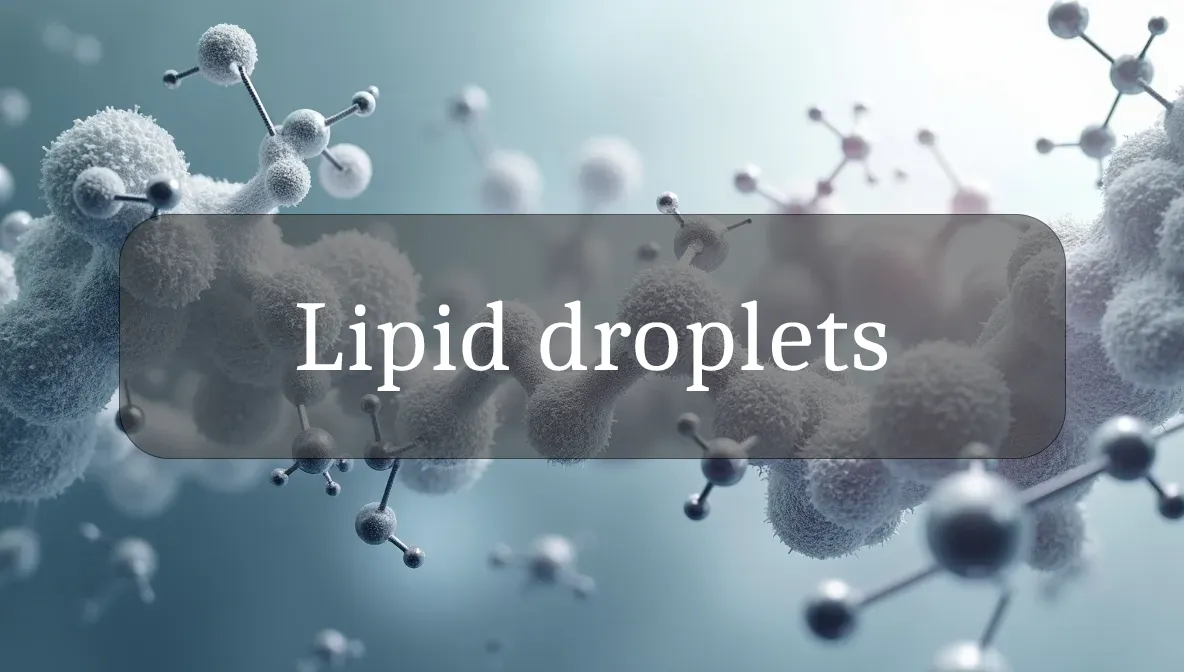Your Cells’ Energy Storage Units
Lipid droplets are tiny, dynamic cellular structures that act like your body’s energy reserves, storing fats for when you need a boost. Found in nearly all cells but especially abundant in fat (adipose) tissue and the liver, these droplets are more than just storage—they play a key role in energy balance and cell health. Let’s explore what lipid droplets do, their impact on daily wellness, and how to support their function for a vibrant, healthy life.
Identity and Function
Lipid droplets are small, spherical organelles inside cells, surrounded by a single layer of phospholipids and coated with proteins. They store neutral lipids, mainly triglycerides and cholesterol esters, which are fats your body uses for energy or building cell membranes. Their key functions include:
- Energy Storage: Hold fats that can be broken down for energy during fasting, exercise, or low-calorie periods.
- Cell Protection: Sequester excess fats to prevent them from damaging cell structures or causing inflammation.
- Membrane Building: Provide lipids for creating cell membranes and signaling molecules.
- Hormone Production: Supply cholesterol for making hormones like estrogen and testosterone.
Biological Role and Health Impact
Lipid droplets are like your cells’ fuel tanks, supporting energy and overall health:
- Energy Supply: Release stored fats to fuel muscles, the brain, and other organs during physical activity or when food is scarce.
- Metabolic Balance: Help regulate fat levels in cells, preventing toxic buildup that can lead to insulin resistance or inflammation.
- Organ Protection: In the liver and heart, they store fats safely, reducing stress on these vital organs.
- Hormonal Health: Support hormone production, which influences mood, reproduction, and metabolism.
- Cellular Repair: Provide lipids for rebuilding cell membranes, aiding tissue repair and growth. By managing fat storage and release, lipid droplets support stamina, metabolic health, and resilience, keeping you energized for daily activities.
Supporting Health
You can promote healthy lipid droplet function with these habits:
- Eat a Balanced Diet: Include healthy fats (avocados, nuts, olive oil), lean proteins, and fiber-rich foods (fruits, vegetables) to support proper fat storage and metabolism.
- Stay Hydrated: Drink 8–12 cups of water daily to aid cellular processes, including fat transport in and out of lipid droplets.
- Exercise Regularly: Activities like walking, cycling, or strength training encourage lipid droplets to release fats for energy, improving metabolic health.
- Get Enough Sleep: Aim for 7–9 hours nightly to support fat metabolism and reduce stress hormones that can increase fat storage.
- Manage Stress: Chronic stress raises cortisol, promoting fat storage in lipid droplets. Try meditation, yoga, or deep breathing to stay balanced.
Signs of Dysfunction
Dysfunction in lipid droplet regulation can signal metabolic or cellular issues:
- Excess Fat Storage:
- Signs: Unexplained weight gain, fatty liver, or insulin resistance (e.g., frequent hunger, fatigue).
- Causes: Overeating, sedentary lifestyle, or conditions like obesity or diabetes.
- Risks: Can lead to inflammation, heart disease, or type 2 diabetes.
- Impaired Fat Release:
- Signs: Low energy, difficulty losing weight despite exercise, or muscle fatigue.
- Causes: Hormonal imbalances (e.g., low thyroid function) or metabolic disorders.
- Lipid Overload:
- Signs: High cholesterol, liver dysfunction, or cardiovascular symptoms.
- Causes: Poor diet, genetic conditions (e.g., familial hypercholesterolemia), or chronic inflammation. If you experience persistent fatigue, weight changes, or metabolic symptoms, consult a doctor for blood tests, lipid panels, or imaging to assess fat metabolism.
Promoting Optimal Function
To optimize lipid droplet health:
- Focus on Healthy Fats: Prioritize omega-3s (fish, flaxseeds) and monounsaturated fats (olive oil, almonds) over trans fats or excessive saturated fats to support lipid droplet function.
- Maintain a Healthy Weight: Balance calorie intake and activity to prevent excessive fat storage in lipid droplets, especially in the liver or heart.
- Avoid Toxins: Limit alcohol, smoking, or processed foods, which can stress cells and disrupt lipid droplet regulation.
- Support Liver Health: Since lipid droplets are abundant in the liver, eat foods like leafy greens and beets to aid liver function and fat processing.
- Regular Health Screenings: Monitor cholesterol, blood sugar, and liver function with routine checkups to catch issues early.
Safety and Stressors
Lipid droplets are natural cellular structures, but certain factors can stress them:
- Poor Diet: High-sugar or high-fat diets overload lipid droplets, leading to inflammation or fatty liver. Choose whole foods to reduce this risk.
- Chronic Conditions: Obesity, diabetes, or heart disease can impair lipid droplet function. Follow medical advice to manage these.
- Oxidative Stress: Free radicals from pollution, stress, or poor diet can damage lipid droplets. Antioxidants (e.g., vitamin C, E) help protect them.
- Medications: Some drugs (e.g., statins, corticosteroids) affect fat metabolism. Discuss side effects with your doctor. If you suspect metabolic or lipid-related issues, seek medical evaluation for proper diagnosis and treatment.
Fun Fact
Lipid droplets are like tiny energy balloons in your cells! They can grow or shrink depending on your body’s needs, expanding to store extra fat after a big meal or shrinking to release energy when you’re running a marathon.
Citations
- National Institutes of Health (NIH): Lipid Droplets and Cellular Metabolism.
- Mayo Clinic: Metabolic Health and Fat Storage.
- Cleveland Clinic: Lipid Metabolism and Liver Health.
- World Health Organization (WHO): Nutrition and Metabolic Health Guidelines.
- Harvard Medical School: Lipid Droplets and Energy Balance.

